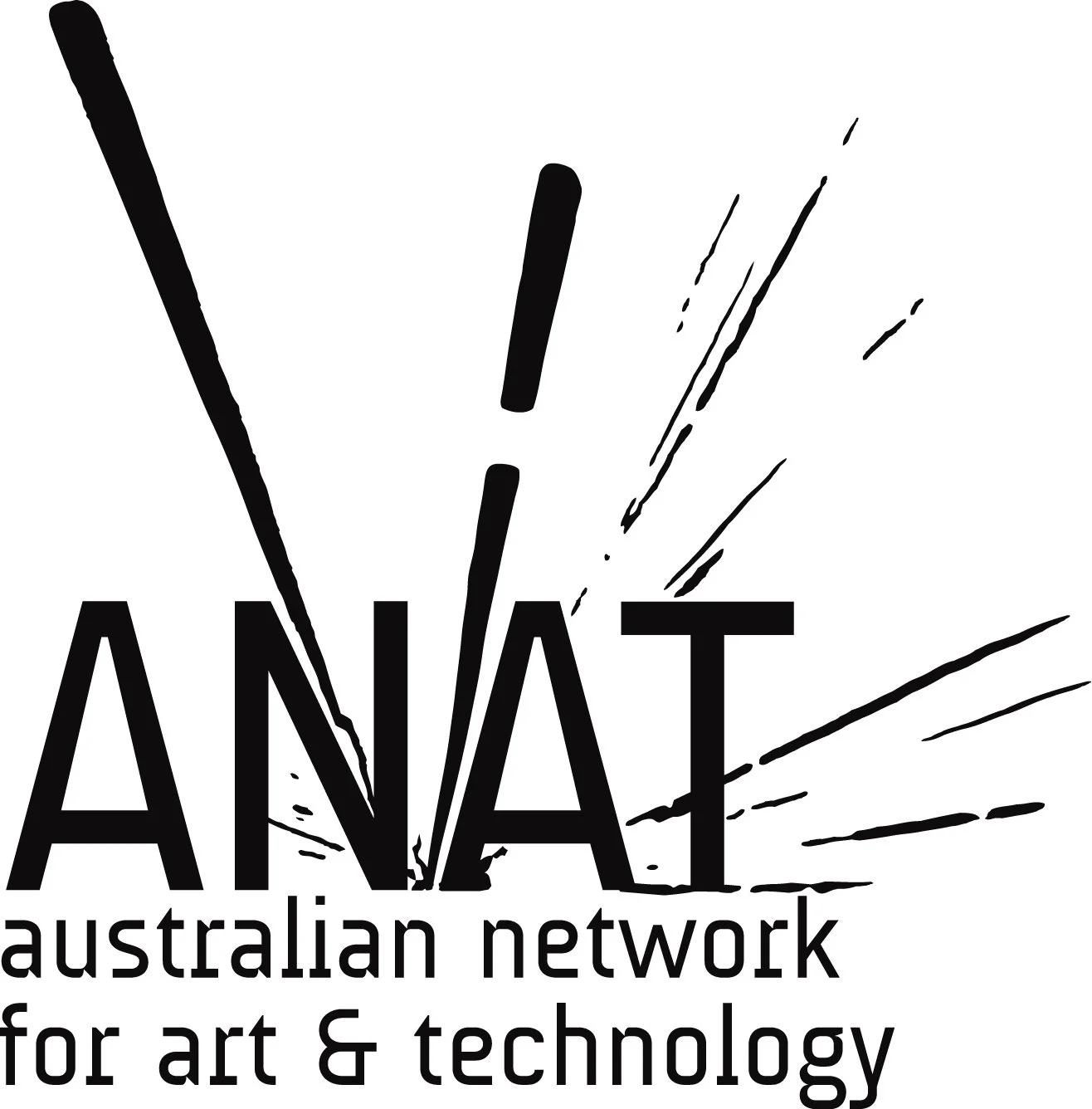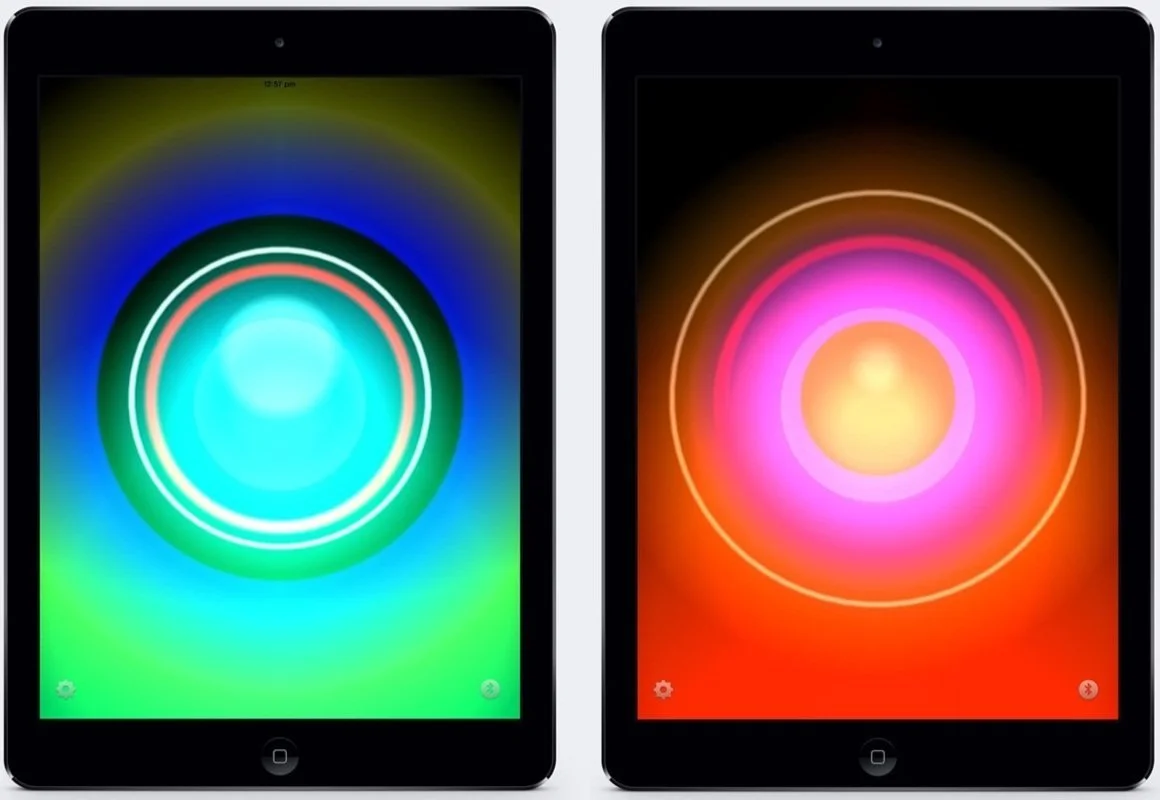BrightHearts app
An iPad app and arts-in-health research project investigating the use of George Khut’s biofeedback art for children undergoing painful and recurrent medical procedures.
Available at the Apple App Store
The BrightHearts research project is interdisciplinary research collaboration between artist and interaction-designer Dr George Khut and Dr Angie Morrow at the Kids Rehab Department, a Brain Injury Specialist, at The Children’s Hospital Westmead, Kids Rehab, in New South Wales, Australia.
With support from the Australian Network for Art & Technology, ‘Synapse’ arts-in-science residency program, and additional funding from the James N. Kirby Foundation, George Khut was able to undertake preliminary research and development work on the BrightHearts App.
The project’s long-term aim is evaluate the efficacy of George Khut’s heart-rate controlled interactive artwork to assist in the management and reduction of stress and anxiety experienced by children undergoing painful, recurrent clinical procedures.
Several pilot trials have now been completed, and a clinical trial of the app is scheduled to start in 2024-2025.
About BrightHearts…
The BrightHearts Research Team at the Children’s Hospital at Westmead, Kids Rehab dept. are investigating the application of George Khut’s heart-rate controlled artworks for use during medical procedures – as a biofeedback assisted relaxation-training app to help manage the pain and anxiety experienced by children who undergo recurrent painful procedures, such as injections for Botulinim (‘Botox’) treatments, Baclofen pump changes, central line changes, and lumbar punctures.
The recurrent nature of these procedures can result in a build-up of anticipatory anxiety, causing significant distress to the children, exacerbating the perceived intensity of the painful stimulus during treatment, and further complicating veinipuncture procedures in cases of extreme vasoconstriction. If left un-addressed, the intense distress and anxiety experienced during these procedures can lead to avoidance behaviours that may stay with them into adulthood.
Children using the BrightHearts App before and during anxiety provoking procedures are rewarded with sounds and visuals that respond to decreases in heart rate over different periods of time i.e. changes that they can influence with their breathing, and longer-term changes that require relaxation. The patterns change according to the patient’s changing pulse rate. Children learn to relax and slow down their heart rate.
The BrightHearts approach combines standard distraction methods with the principals of biofeedback relaxation training – focusing children’s attention away from their object of their anxiety and fear, and helping them to develop skills for observing and regulating their response during painful procedures. The app provides a distraction and helps children gain a greater sense of control over their own body.
Screen cast of the BrightHearts iOS app, availale for download from the Apple App Store (re-released 2023).
The BrightHearts app (iOS only) is available as a free download on the Apple App Store. It was first released in 2015, the latest version is compatible with Apple iPhones and iPads opperating on iOS 15, 16, 17, 18 and higher opperating systems.
BrightHearts works with a wide range of pulse sensors (fitness/heart rate sensors), that use the Bluetooth 4.0 heart rate protocol e.g. ‘Kyto’, ‘Polar’, and ‘Scosche’ brand pulse sensors etc.
Kyto Fitness Technologies currently make and sell a range of accurate and affordable heart rate, and heart rate variability sensors. Their finger clip and ear clip sensors, available for purchase online at around USD $47, have both been tested, and work effectively with the BrightHearts app.
BrightHearts is not compatible with the AppleWatch or FitBit heart rate devices, as these brands use a propietary method for sending and receiving heart rate data.
Research Findings
In a pilot study published by Pain Practice, BrightHearts was found to help most young patients cope better with the pain and anxiety of procedures.
The patient cohort for the study underwent one of three medical procedures: peripheral blood collection, botulinum toxin injection, or intravenous cannula insertion. The researchers observed or received feedback from patients, parents, and healthcare professionals, while satisfaction from these three parties was measured through surveys.
The pilot study showed that 83 percent of patients said that they found the relaxation app helpful and would use it again, all of the parents and 96 percent of healthcare professionals also said they would use BrightHearts again. Sixty-four percent of the clinicians said it allowed them to perform the procedure more easily.
Clinical trials of the BrightHearts app are still underway with patients at the Children’s Hospital at Westmead, Kid Rehab.
Research Publications
Ostojic, K., Sharp, n., Paget, S., Khut, G., 2022, BrightHearts: A pilot study of biofeedback assisted relaxation training for the management of chronic pain in children with cerebral palsy – Paediatric and Neonatal Pain, 2022 – Wiley Online Library
Burton, K., Morrow, A., Beswick, B., Khut, G., 2018, The feasibility of using the BrightHearts biofeedback‐assisted relaxation application for the management of pediatric procedural pain: a pilot study in Pain Practice, 2018 – Wiley Online Library
Davies C., , Skinner, R., Odgers, H., Khut, G., Morrow, A., 2018, The use of mobile and new media technologies in a health intervention about HPV and HPV vaccination in schools, Chapter in Book: Youth, Technology, Governance, Experience, 1st Edition, 2018, Routledge
Morrow, A., Burton, K., Watanabe, M., Cloyd, B., Khut, G., 2017, Developing BrightHearts: A Pediatric Biofeedback‐Mediated Relaxation App to Manage Procedural Pain and Anxiety – Pain, 2017 – Wiley Online Library
Khut, G., 2016, Designing Biofeedback Artworks for Relaxation, CHI EA ’16: Proceedings of the 2016 CHI Conference, Extended Abstracts on Human Factors in Computing Systems
Morrow, A., Yogui, M., Khut, G., 2014, Brighthearts: development of a biofeedback controlled interactive artwork for the management of procedural pain and anxiety in children in Developmental Medicine & Child Neurology, 2014
Exhibition History
2019-2016: People Like Us, group exhibition curated by Felicity Fenner, national touring exhibition to 14 venues across Australia.
2014: Sensory Overload, group exhibition curated by Charlotte Carter, McClelland Scuplture, 390 McClelland Drive Langwarrin, Victoria, Australia.
2013: CUSP: Designing Into The Next Decade, group exhibition curated by Object: Australian Design Centre (featuring BrightHearts iPad prototypes), national touring exhibition, Australia (New South Wales, Victoria, Queensland, and Tasmania).
2013: George Khut Interactive Artsworks 2008-2013, solo exhibition, VIVID Festival, Rocks Popup exhibition and residency hosted by Sydney Harbour Foreshore Authority, The Rocks, Sydney, NSW, Australia.
Production Credits
George Khut: interaction concept, interaction programming (Max-MSP), production management
Dr Angie Morrow: Staff specialist, Kids Rehab, chief investigator – acute pain management
Dr Katarina Ostojic: PhD researcher, Pilot Study and Clinical Trials (2015-2020), Supervisor (2023-)
Karen Bau: PhD researcher, Clinical Trials (2023-)
Ben Cloyd and Melissa Yogui-Watanabe: research assistants, Kids Rehab.
Caroline Dale: Qualitative researcher – children’s experiences of recurrent painful procedures
Trent Brooks: iOS Development, 2014-2023
Jason McDermott: iOS Development. 2011-2014
Andy Nicholson: iOS Development 2012-2013
Dr Angelo Fraietta: custom pulse-sensor hardware and software engineering
Frank Maguire: sensor electronics and hardware design (2011-2015)
Tuan Mahn Vu, Lukas Blödorn, Christoph Eibisberger, and Monette Tan (UTS Faculty of Engineering and IT): Heart Rate Variability Analysis software





